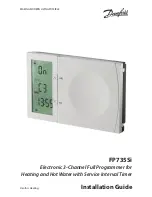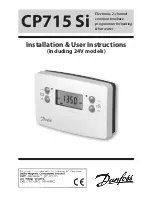
68
Parameterizing
WAGO-I/O-SYSTEM 750
750-636/000-x00 DC Drive Controller 24V/5A
Manual
Version 2.1.0
The I/O module loses the parameter data set Actual (1) after a power failure.
When restarting, the I/O module behaves as described in "Setting the I/O Module
via the Parameter Channel" > "Actual (1)".
8.2.3.2 User Settings (2)
The parameter data set Actual (1) will be transferred as parameter data set User
Settings (2) to a non-volatile memory area of the module via
REQ_STORE_USER command, which will be entered into register 3 of the
module. Prior to this, the entry 0x1235 must be made in register 31.
The user parameter set can overwrite the current parameter set Actual (1) after a
user inquiry; i.e., the REQ_RESTORE_USER command.
8.2.3.3 Factory Default (3)
The parameter data set Factory Default (3) may be only modified
(written/changed, etc.) by WAGO Kontakttechnik GmbH & Co. KG.
The parameter data set Factory Default (3) will be transferred to the volatile
memory area of the module; i.e., to the parameter set Actual (1), via
REQ_RESTORE_FACTORY command, which will then be entered into register
3 of the module.
8.2.4
Transfer of the Parameter Data Sets
8.2.4.1 Request/Response Mechanism
In register 3, the commands are transferred from the fieldbus coupler/controller to
the module. This determines how the parameter data transferred via parameter
channel; i.e., using registers 56 and 57 will be processed in the module. Register 3
can be read and written (R/W) and is used for a command request.
Register 4 can only be read and indicates the command response. The logical
structure of both registers is identical.
8.2.4.2 Session Counter
The high byte of the registers contains a session counter. To request a command,
the value of this byte is incremented in register 3 (with overflow); the execution is
acknowledged by both the module and an identical value in the high byte of
register 4. The low byte contains an application-specific command or the response
code.
Table 32: Session Counter
Register
Bit 8 ... 15
Bit 0 ... 7
3
Session
Request
4
Session
Response
















































